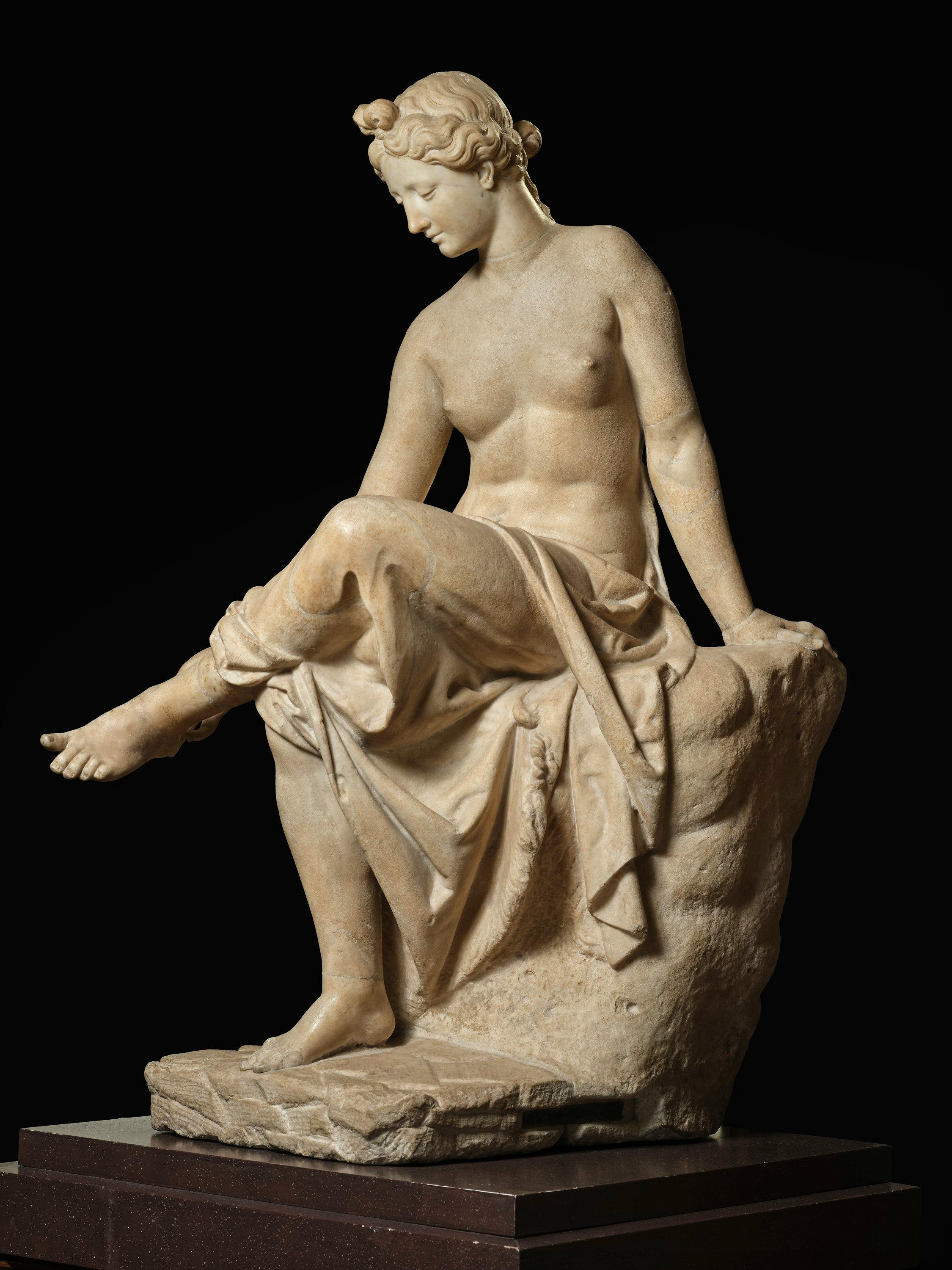Seated nymph
Roman art
The work depicts a nymph seated on a rock, naked from the waist up and with her crossed legs covered by elegant drapery, who is in the act of bringing her right hand towards her left foot. This gesture, which was previously understood as the act of pulling a thorn out the foot, is now commonly interpreted as the act of adjusting or removing a sandal, although this element/accessory has been lost during restoration works. We have knowledge of less than forty replicas of this type dating between the 1st century B.C. and the 3rd century A.D., which are all derived from a prototype dating back to the period between the 3rd and the end of the 2nd century B.C. In particular, the work on display, due to the workmanship of the drapery, should be dated back to the 2nd century A.D.
By comparing the work with other replicas, it is possible to appreciate - among other things - how the post-antique restorations altered the appearance of this sculpture. The head and neck, the right hand and wrist, the forefinger of the left hand, the left knee, both feet including the malleolus, and the front part of the base, are all the result of modern restoration, as well as a small fragment of the cloak and the section that, at the height of left elbow, allows to reconstruct the fragments of the arm. In particular, with regard to the head, in the archetype it must have been turned firmly to the right, while the hairstyle was probably simpler, presenting only a bun on the back of the head. This last element, which expresses a connection with wild and uncontaminated nature, together with the clearly visible teeth characterising the smile and the presence of the rock, contribute to identify the protagonist of the original work with a Nymph or a Maenad, one of the followers of Dionysus.
Already in the beginning of the 16th century, the Seated Nymph was listed among the works preserved in Palazzo Caffarelli in Rome. Later, it was identified with a statue preserved in the Niches Hall of the Pitti Palace that was described by Vasari in 1568. Finally, according to the inventories of the Uffizi Galleries (inv. 1704 - 14 [BGU, Ms 82], no. 156), since the 18th century it has been displayed in the Third Corridor.
E. Ghisellini, “L’invito alla danza”. Osservazioni sulla tradizione copistica del gruppo in margine a una testa inedita della ninfa nel Museo Nazionale Romano , p. 64 e nota 23; p. 65 e nota 27; pp. 73 – 75, in “RdA”, 41, pp. 61 – 80, 2017; J. Habetzeder, The invitation to the Dance. An intersexual reassessment , p. 427; pp. 443 – 450, in “Opuscula. Annual of the Swedish Institutes at Athens and Rome”, 14, pp. 419 – 463, 2021; A. Muscillo, 1. Ninfa seduta in Divina Simulacra. Capolavori di scultura classica della Galleria degli Uffizi , catalogo della mostra (Firenze, Gallerie degli Uffizi, 12 dicembre 2023 – 30 giugno 2024), a cura di F. Paolucci, Livorno, 2023, pp. 16 – 19 e bibliografia precedente
Dancing satyr (also known as kroupezeion)
Roman art
